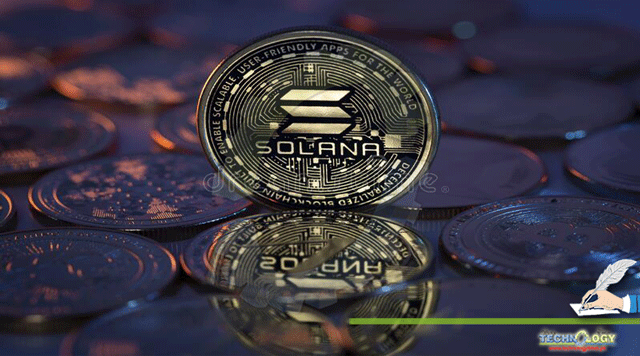Many businesses are starting to use sustainability techniques to trim down on their energy usage and have a positive environmental impact as a result of the urgent need to combat global warming

The cryptocurrencies market is no exception, as a myriad of green projects are emerging with the aim of lowering energy consumption and having a positive influence on the environment.
Various measures, such as proof of stake and other energy-efficient algorithms, are used by eco-friendly cryptocurrencies to reduce their impact on the environment. The quickest growing cryptocurrencies available will be discussed in this article, and their sustainability will be explored.
IMPT (IMPT)
Due to its unique method of trading carbon credits, IMPT is one of the most talked-about enterprises in this field. The concept structures these credits as non-fungible tokens on the Polygon blockchain, opening up the trade market to everyone.
The native token of the IMPT ecosystem, IMPT, is utilized in all marketplace transactions. As a result, IMPT tokens can be used to buy, sell, and trade carbon credits, laying the groundwork for a self-sustaining market where supply and demand set pricing.
Solana (SOL)
A blockchain platform called Solana uses a special consensus algorithm to outperform the Ethereum network in terms of processing speed, transaction costs, and scalability. Solana gives developers the tools they need to produce dApps and non-fungible (NFT) coins.
The proof-of-work and proof-of-stake methods are used in the hybrid protocol used by the cryptocurrency Solana. A high transaction speed is achieved through the proof-of-history innovation, which records the order and duration of each transaction.
Chia (XCH)
In the green cryptocurrency market, Chia, another cryptocurrency, is becoming more well-known. Proof of Spacetime, not Proof of Stake, serves as it is environmentally friendly consensus process. This demonstrates that it was created with sustainability and energy efficiency in mind.
The Chia blockchain is saved on network users’ hard disks rather than being mined. By comparing fresh hashes with those that have already been generated, new blocks are created. A new block wins and receives rewards in the form of XCH tokens when its hash matches another block’s on the chain already.
Algorand (ALGO)
Algorand is a blockchain that supports smart contracts and was created with sustainability in mind in 2022 by MIT professor Silvio Micali. It competes with Ethereum by utilizing Proof-of-Stake and smart contracts, among other technologies.
Instead of relying on mining, the Algorand blockchain network seeks to find a solution to make the blockchain sustainable by constructing a network with no carbon emissions. On any cryptocurrency exchange, users of Algorand can buy, sell, and trade algorithms.
Cardano (ADA)
Due to its emphasis on offering a platform for decentralized applications, Cardano is among the most well-known and widely used cryptocurrencies. In contrast to mining new coins, people join the network.
Cardano is a great option for people looking for an eco-friendly cryptocurrency market that is also profitable to mine, using just 0.01 percent of the energy needed by Bitcoin for the same transaction.
Solarcoin (SLR)
SolarCoin, a cryptocurrency project supporting solar energy, seeks to make solar energy free by paying consumers with SolarCoins (SLR) when they install solar panels. The “Solarity”—the point at which creating energy is “free” occurs once the value of SLR outweighs the cost of generating solar energy.
Near Protocol (NEAR)
South Pole, a prominent provider of digital climate solutions that aids businesses, governments, and other organizations worldwide in lowering their carbon footprints, has certified the NEAR app as climate neutral.
Near Protocol offset its carbon footprint by planting trees, just like Cardano. Unlike Cardano, Near doesn’t use as much energy as Ethereum and can execute more than 100,000 transactions per second.
Tezos (XTZ)
Tezos is a decentralized blockchain network launched in 2018 that relies on proof of stake for validating transactions and securing the network.
It is designed to be self-upgradable without the need for hard forks by utilizing amendment mechanisms. Over the years, Tezos has been considered one of the most eco-friendly cryptocurrencies.
Polkadot (DOT)
Polkadot had the least amount of annual total kilowatt-hours (KWh) of electricity consumption. Polkadot has the smallest carbon footprint of any cryptocurrency asset, according to a survey by the Crypto Carbon Ratings Institute (CCRI).
On cryptocurrency market or exchange, you may buy, sell, and trade DOT. One of the most well-liked exchanges is Kucoin, which has solid security and many active trading pairings, including DOT USDT and USTC USDT.
Closing Remarks
Investors can select environmentally friendly cryptocurrencies to reduce their carbon footprint. They may safeguard the environment while taking advantage of the financial advantages of bitcoin trading as long as they exercise due diligence and look into other choices.
It’s essential to consider a cryptocurrency project’s objectives, the issues it seeks to address, and its staff before choosing it. You should also think about how much money you’re willing to invest in this new market and be ready for pricing to change drastically.